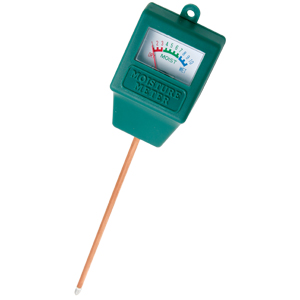This time of year, homeowners usually start to see their water bills increase as they tend to their spring plantings. However, by working with current rainfall levels and implementing water saving devices, homeowners will see immediate savings on their water bills.
The rain gauge and soil moisture meter monitor rainfall and absorption rates so that you don’t over water your plants. The rain gauge simply measures rainfall and the soil moisture meter shows you how much of the moisture is retained in the soil. Using these tools together prevents over watering of plants to promote healthy gardens and lawns and eliminate water waste.
Once you have determined that your plantings need water, these two devices will help you deliver water in the most efficient way possible. The Water Miser 7-Position Spray Nozzle has seven precision spray patters: mist, soaker, shower, jet, cone, flat and center so that you are not applying more water than you need in any given situation.
The hose timer works just like an egg timer. You just twist the dial to the desired watering duration from 15 minutes up to 120 minutes and the timer will turn itself off. The mechanical operation requires no batteries and makes this one of the easiest and quickest timers to use. It has a large dial with both timed watering and manual watering options.
Whether you use a spray nozzle or hose timer, the best time to water is in early morning or early evening to avoid evaporation.
For a small investment in these outdoor water conservation devices, you can decrease your water bill and save thousand of gallons of water per year.









